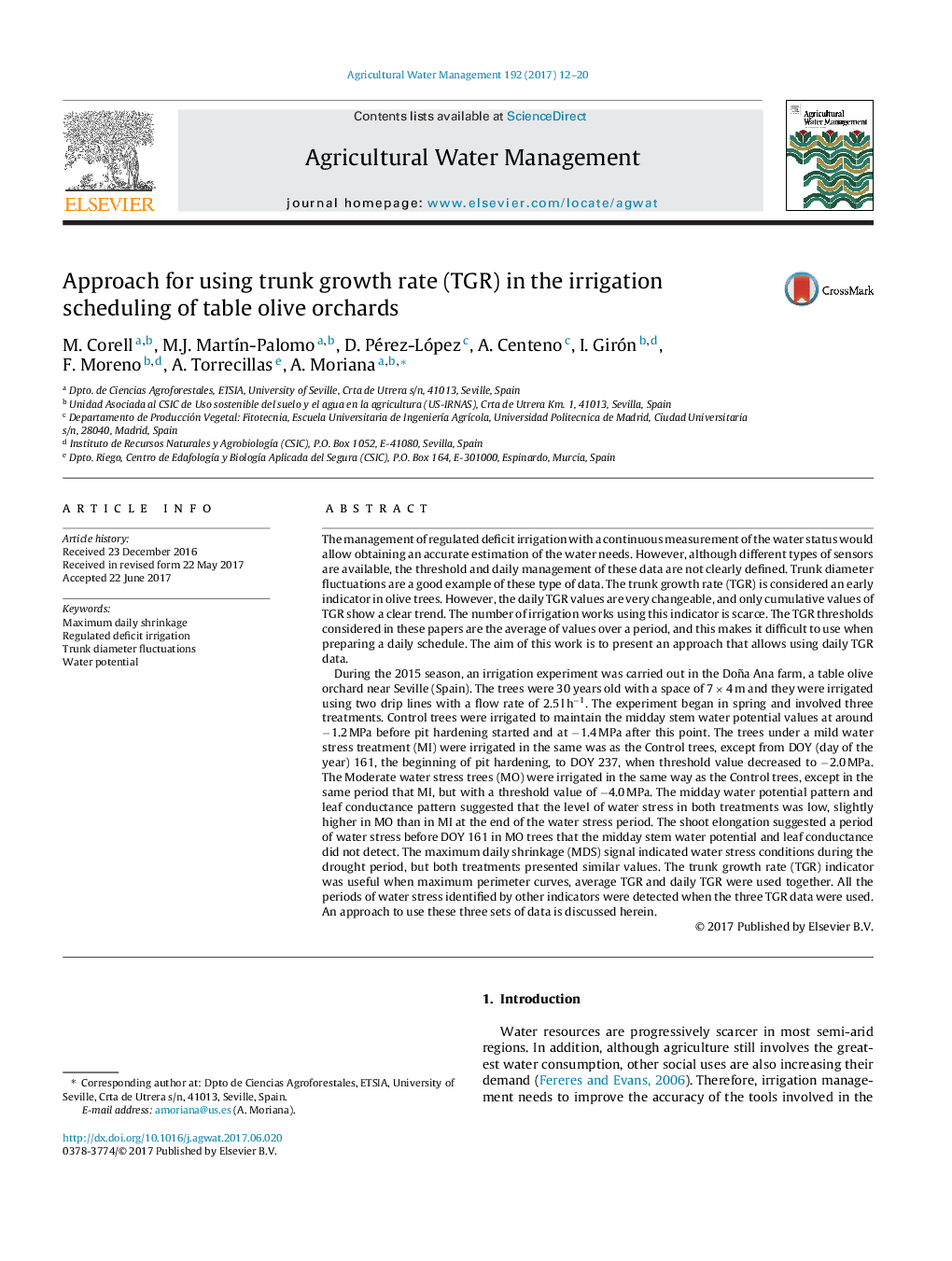| Article ID | Journal | Published Year | Pages | File Type |
|---|---|---|---|---|
| 5758413 | Agricultural Water Management | 2017 | 9 Pages |
Abstract
During the 2015 season, an irrigation experiment was carried out in the Doña Ana farm, a table olive orchard near Seville (Spain). The trees were 30 years old with a space of 7 Ã 4 m and they were irrigated using two drip lines with a flow rate of 2.5 l hâ1. The experiment began in spring and involved three treatments. Control trees were irrigated to maintain the midday stem water potential values at around â1.2 MPa before pit hardening started and at â1.4 MPa after this point. The trees under a mild water stress treatment (MI) were irrigated in the same was as the Control trees, except from DOY (day of the year) 161, the beginning of pit hardening, to DOY 237, when threshold value decreased to â2.0 MPa. The Moderate water stress trees (MO) were irrigated in the same way as the Control trees, except in the same period that MI, but with a threshold value of â4.0 MPa. The midday water potential pattern and leaf conductance pattern suggested that the level of water stress in both treatments was low, slightly higher in MO than in MI at the end of the water stress period. The shoot elongation suggested a period of water stress before DOY 161 in MO trees that the midday stem water potential and leaf conductance did not detect. The maximum daily shrinkage (MDS) signal indicated water stress conditions during the drought period, but both treatments presented similar values. The trunk growth rate (TGR) indicator was useful when maximum perimeter curves, average TGR and daily TGR were used together. All the periods of water stress identified by other indicators were detected when the three TGR data were used. An approach to use these three sets of data is discussed herein.
Keywords
Related Topics
Life Sciences
Agricultural and Biological Sciences
Agronomy and Crop Science
Authors
M. Corell, M.J. MartÃn-Palomo, D. Pérez-López, A. Centeno, I. Girón, F. Moreno, A. Torrecillas, A. Moriana,
